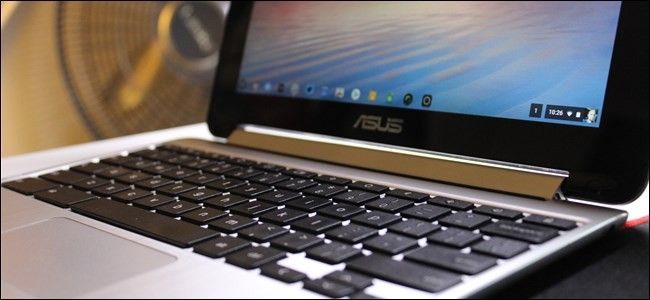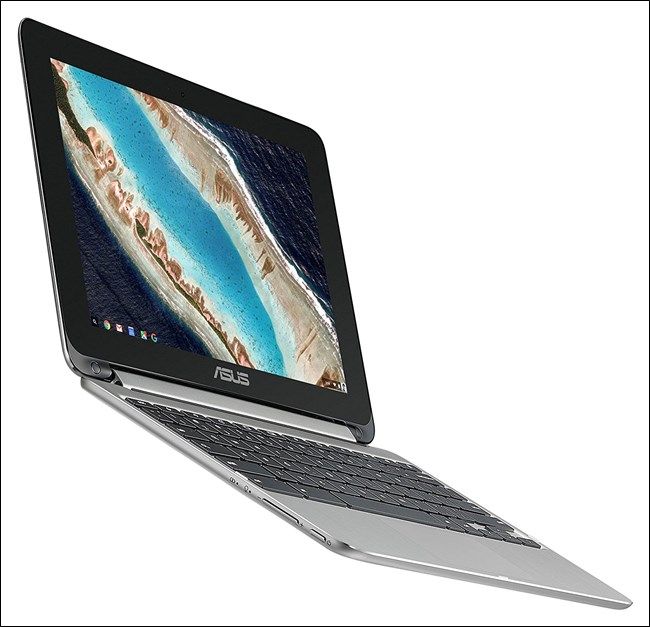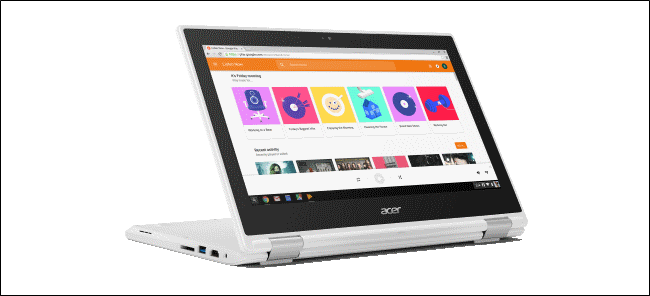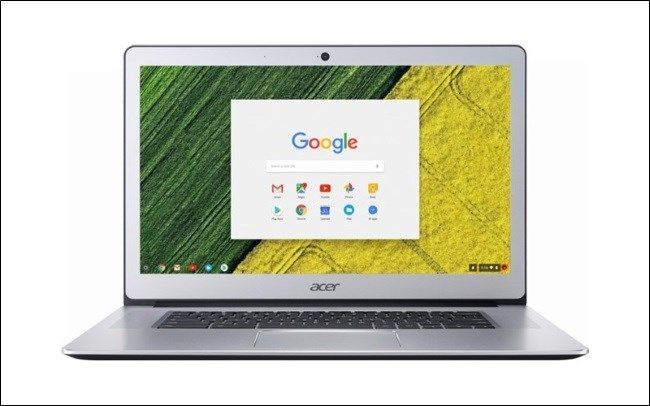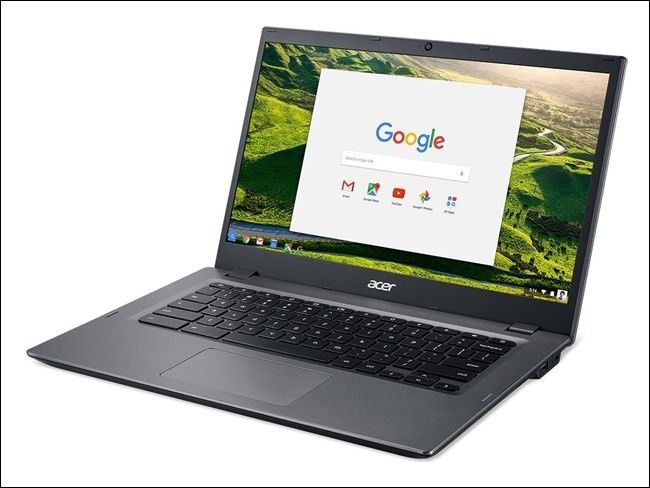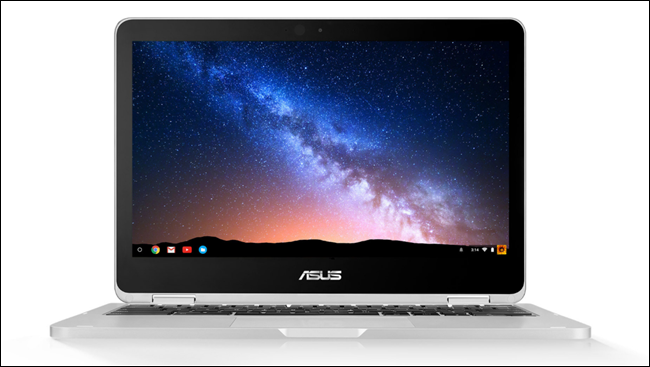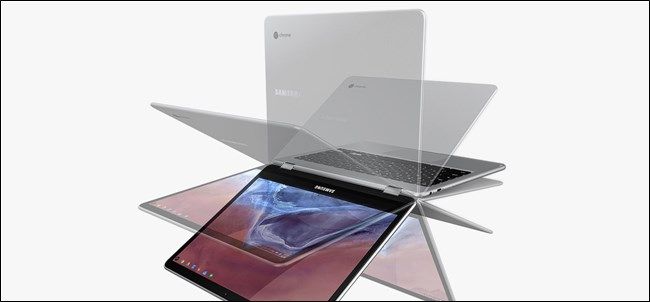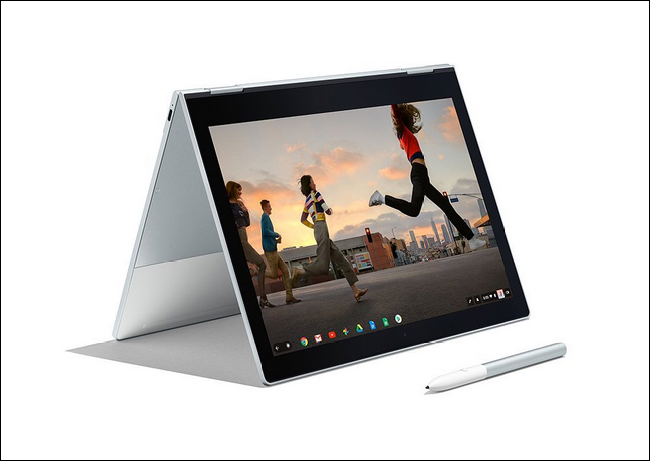Quick Links
While once considered a novelty item by many tech enthusiasts, Chromebooks have broken out of the "just a browser" mold and become legitimate laptops. They're full-featured, lightweight machines that can do everything most users need them to do. Best of all, they're more secure and often more affordable than the competition.
Because they've gained such popularity, there are a ton of Chromebooks to choose from at this point. There's no shortage of choices, from the meager, bargain store devices to the ultra high-end premium segment. While that's a good thing, it's also hard to find the right one for you. So we've picked the current cream of the crop at various price points to help you narrow down that search.
Is a Chromebook Right for Me?
Before we look at some of the best 'Books on the market today, there's a big hurdle you need to jump: is a Chromebook even a feasible option for you?
In short: it depends.
You need to take a closer look at how you actually use your computer to make that call. The biggest question, I think, is: do you live in the browser? If Chrome is your most-used app and 95+ percent of what you do on the computer revolves around Chrome, then yeah---a Chromebook will work exceptionally well for you. There are more than likely Chrome-based apps to cover the other five percent of your computing needs, but again, that's something you'll need to do a bit of research on.
The other half is hardware. Think about your peripherals or anything else that you plug into the computer. Most printers and scanners will work flawlessly out of the box with a Chromebook, but you won't be able to do certain things---like sync your iPhone data to your local hard drive, for example. No iTunes means no local access, which could be a deal breaker for some users.
Similarly, and this may go without mentioning (but I'm doing it anyway), you have to keep your expectations in check. You're not going to do any hardcore video or image editing on a Chromebook. Not only is the hardware simply too limited for this, but there really isn't much in the way of software right now, either. Don't get me wrong---minor image tweaks are definitely possible (and even easy) on a Chromebook, but if you do this a lot, then you may want to look elsewhere.
Basically, if you’re going to be spending anything more than $500 on a laptop, you might be better off looking in the lower-end range of Windows machines---again, you'll have to keep your expectations in check when it comes to raw power, but they will at least be more versatile.
With that said, Chromebooks have definitely filled another niche in the electronics market that none of us knew we wanted until Google said we could have it. These laptops are a constantly evolving lineup of affordable, rugged productivity machines that can slide out quickly from a briefcase or backpack, boot up from sleep instantly, and have us typing or swiping in seconds.
And in my experience, if a Chromebook is right for you, you'll absolutely love it.
The Best Chromebooks on a Budget (Sub-$300)
There are a lot of affordable Chromebooks out there---some as low as $99! That said, you get what you pay for in that sub-$150 price-point, so unless you're really looking to go budget, I'd recommend staying away from that segment of the market. When it comes to budget Chromebooks, spending a little more goes a long way. Here are the best sub-$300 arena.
ASUS Chromebook Flip C101: $299
When it comes to budget Chromebooks, the ASUS Flip C101 might just be the king---rightfully so, as this is the successor to last year's Flip C100. ASUS has done an excellent job of keeping the cost down where it makes sense---for example, the C101 uses a highly cost-effective Rockchip processor that gets the job done beautifully. Paired with 4GB of RAM, it holds up very well to everyday tasks. ASUS also knows exactly where not to cut corners: build quality. For the price, the C101 has a surprisingly solid aluminum chassis and very robust overall build.
And it's also more than just a Chromebook---its 10.1-inch convertible design and ability to run Android apps makes this an excellent tablet replacement as well. Admittedly, it's slightly bulky when in tablet mode, but if you don't have a tablet or are looking to replace and aging unit, you can easily kill two bird with one stone by just grabbing a C101.
The only place where the C101 may fall short for some users is the display size. That 10.1-inch touch panel (at 1280x800 display resolution) might make it hard to use as a full-time laptop---especially for users with less than perfect eyesight.
The ASUS Flip C101 is available on Amazon for $299. If you're looking to save a bit of money, you can also opt for last year's C100 for around $260, which features a slightly slower Rockchip processor but otherwise very similar components.
Acer Chromebook R11: $199-299
If you're looking for a convertible Chromebook with a slightly larger screen, look no further than the Acer R11. This 11.6-inch Chromebook can hit full-on tablet mode (along with full access to the Google Play Store for Android apps), but still readily get your through a day of pounding keys and plugging away at spreadsheets if that's what you need.
Its plastic shell doesn't scream "I'm a premium budget device!" the way the C100/101's aluminum shell does, but it does pack some slightly more powerful hardware under the hood---the Intel Celeron N3150 processor will go a long way in keeping sluggishness at bay, letting you do more in less time. I don't know anyone who can't appreciate that.
The R11's 1366x768 touch panel should provide a little less eye strain than the C100's display, given that it's not only a slightly lower resolution (on the vertical axis, anyway), but it pairs that with a larger display in the first place.
There are two variants of the R11, depending on your needs: one with 2GB of RAM and one with 4GB of RAM. I'm always going to recommend the latter, especially since it's only $20 more than the 2GB model. Easily worth the extra coin.
You can get the Acer Chromebook R11 from Amazon.
The Best Mid-Range and Premium Chromebooks ($300+)
Budget Chromebooks are great, and they fit very well into most people's lives---if you don't have a high need for a laptop, the budget scene is where it's at. But if you're looking for more power, larger displays, and an overall nicer machine that can fill the laptop void, the list below cover the Chromebooks that fit the bill.
I decided to combine mid-range and premium Chromebooks into the same category for one primary reason: depending on the selection you make, each of these machines can go either way. For example, there are several different versions of the HP Chromebook 13, ranging in price from $499 to $819. The entry level model is a solid mid-range device, but if step it up to (and above) the $599 model, you've got yourself a premium Chrome OS machine.
Aside from the obvious---larger screens, premium build quality, etc.---the most notable differences you'll find in this premium line will be what's under the hood: processors and RAM. While the ARM-based chips found in most cheaper Chromebooks can get the job done for a lot of people, the more advanced processors found in the 'Books you'll see below pack a much bigger punch. While many of them are still using ARM chips, these aren't of the smartphone-in-your-computer variety---these are often designed from the ground up with Chromebooks in mind. That means they're made to push more power while still staying cool---you know, exactly what you want in a laptop. And of course, the Intel mobile chips used in Chromebooks are the same ones that you'll find in many current Windows laptops, and the already-impressive performance is going to be further enhanced when you toss one of those into a lightweight Chromebook.
Further, the RAM issue is still at play here, just like on a more traditional PC. In short, the more RAM you have, the more tasks you can run at the same time. If you're like me, it's nothing to have 20+ Chrome tabs open at one time---that can be a lot on just 4GB of RAM, which is why I'd highly recommend looking more towards something with 8GB. But, on the other hand, if you're a two-to-three tab kind of person, 4GB should be more than enough.
Acer Chromebook 15 (2017 Model): $399
If you're looking for a larger Chromebook that offers an incredible bang for you buck, the Acer Chromebook 15 is absolutely, undoubtedly it.
This newly-redesigned for 2017 Chromebook is one of the hottest 'Books on the scene, and its premium look and feel make it one of the best purchases you can make right now in this space.
It features an all aluminum build, a large 15.6-inch full HD touch screen, 4GB of RAM, and 32GB of storage. It's powered by an Intel Pentium N4200 processor, which keeps things surprisingly peppy most of the time.
It also packs a pair of USB-C ports---both of which can be used for charging (!)---along with two USB 3.0 ports and a media reader. Might as well make the best of the bigger chasis, and Acer did just that with the Chromebook 15.
While it doesn't have a convertible design like most of the others on this list, it does offer support for Android apps, which adds even more value to a Chromebook that already offers a lot for the money.
You can buy the Chromebook 15 right now at Best Buy for $399, though you can also catch it on sale for as low as $350. Fantastic deal.
Acer Chromebook 14 for Work: $480
If you're looking for a hard working, do-everything Chrome OS laptop that won't break the bank, the Acer Chromebook 14 for Work could be your huckleberry...assuming you're not looking for a convertible laptop to also use as a tablet. It's also worth noting that the Chromebook 14 for Work is the only Chromebook on this list that doesn't run Android apps (and probably never will). Those are definitely things to consider.
All that said, if you just need Chrome OS and nothing more, the Chromebook 14 for Work is a workhorse. It packs an Intel Core i3 processor and 8GB of RAM---nearly unprecedented specs for a Chromebook, but especially one at this price point. The 14-inch display runs at full 1080p resolution, which should be plenty crisp.
It's also a bit more robust than other Chromebooks on this list, as it features Gorilla Glass protection, as well as internal routing that channels liquid away from the components and through two vents on the bottom should something get spilled on it. That's neat.
Lastly, it features one USB Type-C port for charging and data transfer, as well as two full-size USB A 3.0 ports. Like I said, if you're looking for a tried and true Chromebook that will run circles around the majority of the competition, the Chromebook 14 should at least make your shortlist.
You can pick it up from Amazon for $480.
ASUS Flip C302: $499+
A CES 2017 newcomer, the Flip C302 is the bigger, more powerful brother the Flip C100/101. This gorgeous machine takes all the great things about the C100/C101---the aluminum build and convertible design---and brings it into a larger, 12.5-inch form factor. There will be two versions that sport Intel Core m3 and m7 processors, respectively.
Unlike some of the other premium options here, ASUS has opted to stick with an FHD (1920x1280) display resolution, which is honestly probably for the best---the fewer pixels, the better performance and battery life you'll get. While I'm sure QHD panels are nice, I will openly admit that they could be overkill on such relatively small displays. I realize there are a lot of opinions on this subject, however, so I'm just going to stop there.
To offset the comparatively lower display resolution, the C302 does have some other unique features, like an ambient light sensor. Much like your phone, the C302's display will automatically adjust brightness according to the lighting in the room---an admittedly nice feature to have, I think. It also has a backlit keyboard, which the Samsung units are surprisingly (and disappointingly) lacking.
Pricing for the Flip C302 will start at $499 for the Core m3 model with just 4GB of RAM, with no word on how much the m7/8GB model will run. For more information on the C302, head here, or go here to buy the m3/4GB model from Amazon. Again, we'll update as more information about the m7/8GB model becomes available.
Samsung Chromebook Plus/Pro: $449/$549
Another set of CES newcomers, this duo is a pair of mean machines. Both the Pro and Plus models feature nearly identical hardware specs, including a 12.3-inch 2400x1600 touch panel, 4GB of RAM, 32GB of storage, and a stylus that strongly resembles Samsung's famous S Pen.
Why the stylus? Well, because these two convertible machines are "built for the Google Play Store." Much like the other convertibles on this list, these are laptops and tablets in one with full access to Android's Play Store, and at just 2.38 pounds are actually light enough to fit the bill.
The primary difference between the Pro and Plus models will be the processor: the Plus comes with a Samsung-designed hexa-core ARM processor, while the Pro packs an Intel Core m3 chip. The price of the former will come in at $449, and the latter comes in at a respectable $549.
While both the Pro and Plus models look solid, there are a few things Samsung should get a slap on the wrist for: no 8GB RAM option, limiting both devices to 32GB of storage, and no backlit keyboard. These are premium Chromebooks designed to provide a premium experience, which can be hard to do with limited specs. Still, the processors should help provide a better experience than the smaller, more affordable Chromebooks we looked at above, so there is that.
You can buy both devices from Amazon: Chromebook Plus, Chromebook Pro.
The Best Ultra-Premium Chromebook: Google Pixelbook: $999-$1650
If you're looking for a top of the line Chromebook, the Google Pixelbook is undoubtedly the answer. The lowest-end model sports an Intel Core i5 processor, 8GB of RAM, and 128GB of storage. The top end model gets a little crazy with a Core i7, 16GB of RAM, and a massive 512GB of storage---arguably more than one would ever really need in a Chromebook.
But this is Google's take on what a premium Chromebook should be. The fit and finish are premium from top to bottom, with the Pixelbook sporting an ultra-thin 10.3mm chassis. It's designed in and out for the convertible form factor, features full access to the Play Store for Android apps, and promises up to 10 hours of battery life. Really, it's a beast.
Not unlike the Samsung Chromebook Pro/Plus, the Pixelbook also has an available pen stylus, called the Pixelbook Pen. This $100 add-on is a bit bigger and more cumbersome than the Pro/Plus stylus, however as it's more of a full pencil size, and there's nowhere on/in the laptop to store it. In other words, it just kind of floats around. Its $99 price tag also brings into question how much you'll actually need that sort of functionality on top of an already-expensive Chromebook, but if you've dreamed of writing on your computer's display, then the option is available for you.
If you have a Pixel phone, the Pixelbook will also offer a unique feature that's unclear if it will come to other Chromebooks: instant tethering. Basically, when combined with a Pixel phone, the Pixelbook will instantly and automatically tether (over Bluetooth) to the phone when away from Wi-Fi, allowing it to use the available data connection to remain always-connected. That is awesome. But like I said, this may or may not come to other phones and Chromebooks---only time will tell.
If you're all-in on this ultra-premium Chromebook, you can find more information or pre-order it directly from Google or Amazon, starting at $1000. The Pixelbook will also be available in retail chains like Best Buy starting on October 31st if you're rather go hands-on first.
If you've been holding out for a new laptop and considering a Chromebook as your next machine, there's never been a better time to make that leap. All the premium features available on these modern Chromebooks make them excellent choices for almost everyone, especially those who want powerful simplicity and an always up-to-date, secure system. For what it's worth, I've chosen the ASUS Flip C302 as my primary laptop (for the time being, anyway; the Pixelbook is awfully tempting)---it has the best balance of features and price to this writer.

